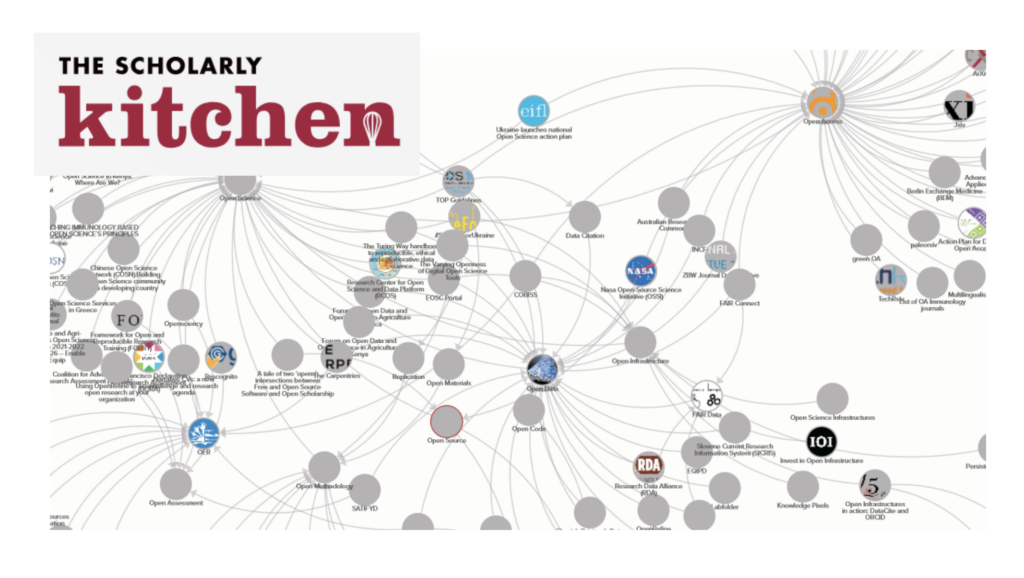This article was featured in The Scholarly Kitchen; with thanks to Lisa Janicke Hinchcliff for editorial comments.
With Open Science being pretty much a mainstream term nowadays and with an ever-increasing number of digital tools, national policies, research community standards, and funder requirements available, many researchers seem to still be stuck in the publish and/or perish paradigm due to (too) slowly changing institutional policies and individual habits.
As a trainer and consultant for Open Science Communication, I’m often in discussions with early career researchers about Open Science principles and best practices across the research workflow, from literature search, through data management, to publishing. Many times I hear that the general idea behind those principles works very well in theory, but does not seem to be applicable to realities in certain research communities, disciplines, and world regions.
And yet, they are… at least increasingly so:
To attempt to counter the misperception that Open Science only fits a few, I decided to start mapping the resources. And, indeed, there seem to be at least 2 or three that researchers of any given topic in any region of the world can identify and adopt for their data and workflow processes. The map now contains more than 200 resources and supplementary data nodes across the spectrum of available tools, guidelines, events, and services by research discipline, also including general resources that are sortable by Open Science principle, language or country.

The map contains resources per discipline across all the open science principles including:
- Articles, commentaries, blog posts etc. highlighting established or emerging Open Science practices per discipline and research field.
- Open Access resources including links to DOAJ and The Lens.org journal searches by discipline, discipline-specific preprint repositories, and Open Access declarations.
- Open Data including discipline-specific data repositories, The FAIR and CARE principles.
- Open Hardware communities, networks and guidelines.
- Open Source Software packages that serve specific disciplines or research fields as ell as tools and references.
- Resources and guidelines on Open Evaluation and Assessment, such as SF DORA and CoARA.
- Open Peer Review platforms and communities.
- Open Science policies and guidelines of Selected research associations, funders and other scholarly stakeholders.
- Citizen Science projects and platforms .
- Persistent identifiers relevant for publishing of manuscripts, data and code.
- References to other knowledge systems (indigenous knowledge, researchers at risk, marginalized scholars).
- Multilingual resources and those that are available in languages other than English.
It is possible to switch the view of the map from discipline-focused to sort by Open Science principles, language, region or country. A user can thus explore which resources are available in a particular language, learn about national Open Science policies, or discover regionally available data repositories.
The map is based on a spreadsheet that is accessible online (dataset DOI: 10.5281/zenodo.7554848) made with the data visualization tool Kumu.io. For better usability, the map can be accessed directly at https://kumu.io/access2perspectives/open-science#disciplines. The data can be sorted by discipline (default view), by research disciplines, by OS principles, and by language. Clicking on one or the other node opens a panel with additional information about the resource, available languages, the owner or hosting institution, and more.
An example search could be for “Open Data” – here is a direct link to the node: https://kumu.io/access2perspectives/open-science#disciplines/by-os-principle/open-data?focus=1. Included are the various Research Data Alliance (RDA) interest groups, the FAIR and CARE Principles, organizations like GoFair and the NASA Open Source Science Initiative, and much more. Each subnode comes with a list of relevant metadata such as website url, description, language(s) of the resource, host institution, geolocation of the hosting service, etc. One can expand the view further to focus level 2 and 3 and see how the map expands and displays interconnections between the nodes.
I added the UNESCO Open Science recommendation, toolkit, and documents related to Open Science, which widened the scope for Open Science, e.g., to the engagement with other knowledge systems, and established a clear focus for the benefit of Open Science for societies around the world.
Who is it for?
Initially, l thought the map would be useful primarily to practicing researchers from around the world to adapt their workflows and embrace the resources they can find in this map that are relevant and applicable to their research topic. For me, as a trainer and facilitator for scholarly stakeholder engagement, the map serves as a quick reference to be able to report on research topics related to Open Science tools and guidelines and quickly recall the array of tools and materials available for a particular Open Science principle.
Other scholarly stakeholders may as well use the map as a reference to inform researchers and gain a better overview of the current diversity of available resources. They can also add those that might still be missing from the map and those that will emerge in the future.
What’s next?
I have added the ability to sort the map by country, language, and world regions to show open science communities on national and local levels as well as enable tracking of open science policies as they emerge and evolve all around the globe.
This map is a living document, published under CC BY SA, and all are welcome to add resources are contact me to become a co-contributor (individuals and institutions), either by email (info@access2perspectives.org) or using the submission form https://forms.gle/rAG7Pu56Z8Dt9fpn8) to add resources to the map.

